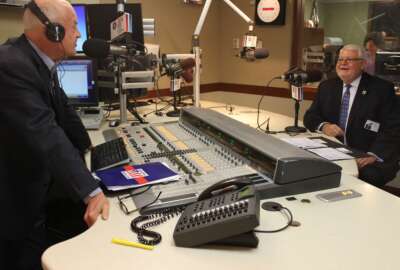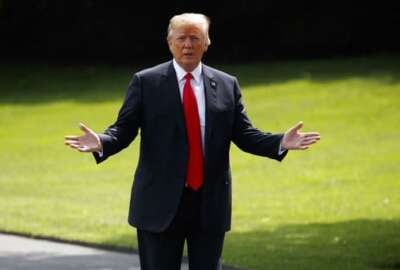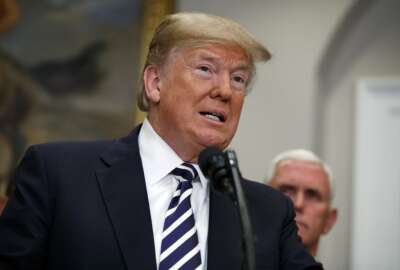
Many agencies already meeting official time limits in Trump’s new EO
President Donald Trump's second executive order offers new limitations on official time, as well as restrictions to federal union use of agency office space and...
Though the president’s executive order on official time gives the Office of Personnel Management 45 days to implement, it may take longer for federal employees to notice the order’s most impactful provisions.
The order, “Ensuring Transparency, Accountability and Efficiency in Taxpayer Funded Union Time Use,” offers much in the way of new official time limitations.
But agencies must still bargain over these specific terms with federal labor unions — a process that though the Trump administration is trying to shorten, may still take months, if not longer. Agency managers must continue to adhere to current union agreements, unless, of course, they choose to reopen them.
“There’s nothing in here that allows an agency to today go to the union and say, ‘OK, under the contract, we’ve been giving you free office space. You have to start paying rent on it starting next week,'” said Bill Wiley, former chief counsel to the chairman of the Merit Systems Protection Board and now attorney and co-founder of the Federal Law Training Group. “In other words, management is bound by what it has in current agreements, but as those agreements expire or if there’s a mid-term re-opener to an agreement, the executive order is saying … management is supposed to refuse to agree to any union proposal that would provide the union, for example, free office space.”
Specifically, the executive order directs agencies during the collective bargaining process not to authorize official time that exceeds one hour per employee in the organization’s bargaining unit.
Based on the most recent numbers included in OPM’s fiscal 2016 report, this mandate may be a significant lift for some, but not all, agencies.
The Veterans Affairs Department, for example, has 297,324 bargaining unit employees. Under the president’s new order, VA could authorize no more than 297,324 hours of total official time to achieve a rate of one hour per employee.
But in 2016, VA employees spent more than one million hours on official time in total in 2016 — more than triple the number of workers in the agency’s bargaining unit.
According to the 2016 report, most agencies’ official time rate, or the total number of hours per bargaining unit employee, surpasses the EO’s mandated one hour.
But some federal HR experts say the administration’s one hour goal may be plausible, and statistics from OPM’s latest official time report show some agencies are already at or below that one hour rate.
“That’s not terribly unreasonable, but it depends what’s going on in the agency,” said Jeff Neal, former chief human capital officer for the Homeland Security Department and now a senior vice president with ICF International.
The Defense Department’s 409,000 bargaining unit employees, for example, achieve a rate of 0.94, according to OPM. The Interior Department’s employees spend an average of 0.88 hours on official time, while other larger agencies, such as the Energy Department and NASA come close with a rate of 1.38.
The EO also sets other limitations.
Employees must spend 75 percent of their paid time “performing agency business or attending necessary training,” the order said. Again, agencies will have to bargain with federal unions over this particular provision, a process that will likely take some time.
Agency supervisors must approve each employee
In addition, the order clarifies that employees can’t use official time to lobby members of Congress or others, but current law already prohibits those activities.
Grievances and office space
One of the most significant changes included in the president’s official time order prevents union representatives from using official time to prepare or pursue grievances.
The order doesn’t, however, prevent employees from using official time to prepare or present a grievance on their own behalf.
In addition, the EO restricts union representatives from using government office space or property for free or for a reduced cost. Some agencies have set aside space within their buildings for union offices.
Perhaps most notably, the Education Department asked representatives at the American Federation of Government Employees to return government-issued computers, phones and other devices and abandon previously-occupied office space. The directive came after Education ended ground rules negotiations with AFGE and implemented its own document in place of a collective bargaining agreement.
Is this significant?
Though federal unions have been quick to criticize this EO and the president’s third order on collective bargaining, these orders still leave some ambiguity.
On one hand, this executive order, in addition to the third EO President Trump signed on collective bargaining, could be seen as a mere proposal for agency management, Wiley said. The union may not agree during negotiations, and the EO specifies that matters of official time use are still negotiable.
If the two parties can’t agree during negotiations, the administration has instructed the agency to take the matter to members of the presidentially-appointed Federal Impasse Panel.
But on the other hand, past case law has determined that executive orders are essentially government regulations, Wiley said.
“As an executive order, this carries a limiting affect [and] weight on management and union collective bargaining,” he said. “Even if management wanted to, for example, give union officials 100 percent official time to do their work, this precludes them from doing that.”
Copyright © 2025 Federal News Network. All rights reserved. This website is not intended for users located within the European Economic Area.
Nicole Ogrysko is a reporter for Federal News Network focusing on the federal workforce and federal pay and benefits.
Follow @nogryskoWFED
Related Stories

What changes (and doesn’t) under Trump’s new employee removal executive order

Trump signs executive orders making it easier to fire feds, overhaul official time

Official time: What everyone agrees on is what they don’t know




